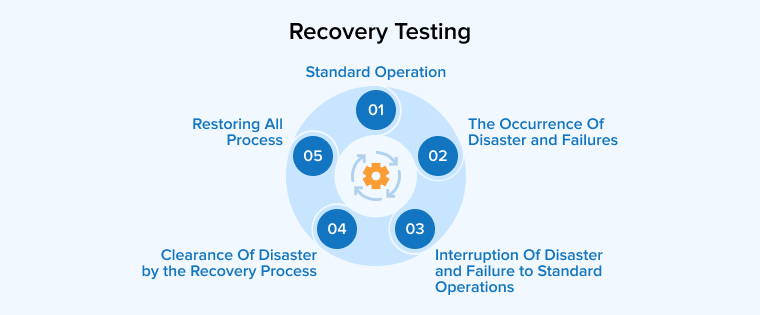
Here are some types of system testing that play an essential role in the software testing process.
1. Functionality Testing

To ensure that the product’s performance meets the required criteria while remaining within the constraints of the system, this phase evaluates whether the system, and notably its functionalities, abide by the objectives.
Throughout functional testing, analysts might think of ways to improve a product by listing down prospective add-ons. The data supplied reflects both human and automated testing settings.
2. Recovery Testing

By simulating various input mistakes and other failures, you can evaluate the method’s resilience to failure. You can also determine if it can recover from system shutdowns, hardware malfunctions, and other major difficulties.
As more modules are added to the queue over time, it also prevents previously fixed issues from reappearing. It is a test of the system’s ability to withstand disturbances from outside sources.
3. Performance Testing

In order to ensure your system is operating as intended, you need to do performance testing to ensure all of its parts are meeting the required standards. It determines whether or not the system meets its performance requirements, like throughput or response time.
4. Usability Testing

5. Load Testing

It is a type of non functional testing. Seeing how a software solution performs under realistic conditions is crucial.
In load testing, the efficacy of an application is evaluated by applying loaded user traffic that is either below or equivalent to the expected load. Here, traffic or load refers to N-number of concurrent users accessing the application or submitting requests to the server.
Load testing will assist in identifying an application’s utmost operating capacity and any constraints. It regulates how the software application functions when used simultaneously by multiple users. Load testing is primarily used to evaluate the efficacy of Client/Server and web applications.
6. Migration Testing

7. Regression Testing

8. Hardware/Software Testing
System tests is a comprehensive method for evaluating a system’s functionality, including its hardware and software components. HW/SW testing is IBM’s term for testing both hardware and software. Here, it focuses only on the system’s functionality and not its underlying structure.
Each bit of gear is put through its paces to make sure it does what it’s supposed to. It may be essential to check the system’s cabling, power source, and input/output elements, as well as the performance of each piece of software that forms up the system under evaluation.
There are other types of system testing that include system integration testing, acceptance testing, stress testing, security testing, compatibility testing, scalability testing, reliability testing, installation testing, recovery testing, smoke testing, sanity testing, exploratory testing, end testing.
See more information: – network.sciencefather.com
Nomination : Nominate Now
Contact us : network@sciencefather.com
Social Media :
.png)


No comments:
Post a Comment